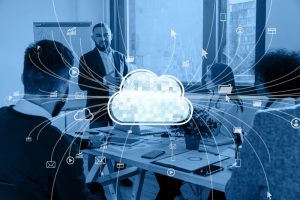Machine Learning in Education: A Potential Pitfall 5

Machine learning is reshaping industries, including education, in our evolving tech landscape. It’s a powerful catalyst today. Machine learning can analyze data and enhance performance without needing explicit programming. The potential of this can change how we approach traditional education.
I. Machine Learning Inroads in Education
A. Tailored Learning Trajectories
Machine learning plays a crucial role in education by creating personalized learning paths. Machine learning algorithms analyze academic achievements. They also look at students’ learning preferences and pace. This holistic understanding helps create customized educational content. It ensures each learner progresses at their own pace.
B. Cognizant Tutoring Systems
Leveraging machine learning, intelligent tutoring systems deliver adaptive and individualized support to students. These systems pinpoint student struggles and offer extra resources and practice exercises. They provide precise help in specific areas. This approach helps students learn better by providing personalized support. It makes the learning experience more effective and engaging.
C. Analytical Projections for Student Performance
Machine learning algorithms sift through extensive historical data to prognosticate students’ forthcoming performance. Educators use insights to identify at-risk students and those poised to excel. This intervention offers tailored support and guidance. It enhances academic prowess.
II. Merits of Machine Learning in Education
A. Augmented Student Engagement
ImproveShow HardTailored learning experiences cultivate heightened levels of student engagement. Machine learning content changes based on what students like. It makes learning more interactive and fun. Students who find the material interesting are more likely to participate. This makes their educational journey more engaging.
B. Adaptive Learning Milieus
ImproveShow HardMachine learning helps create personalized learning programs that change as you learn. Students can have the right level of challenge, so they don’t get bored or feel frustrated. Students are more likely to understand and remember concepts for a long time.
- Streamlined Resource Allocation
Educational institutions can optimize resource allocation through the prism of machine learning. This includes assigning educators with specialized skills to certain subjects. It also involves identifying areas that need more resources. This ensures a better learning experience.
III. Predicaments and Apprehensions
A. Data Confidentiality and Integrity
The infusion of machine learning in education raises concerns. People worry about the confidentiality and integrity of student data. Balancing data use for improvements and protecting sensitive information is a critical challenge. Robust security measures and stringent privacy protocols become imperative for mitigating these risks.
B. Equitability and Accessibility
Ensuring fair access to machine learning-driven education assumes paramount importance. Mitigating the digital divide is pivotal for the success of these innovations. Some students lack access to requisite technology. Thus, it is crucial to provide resources to all students. We should provide resources irrespective of their background. Institutions must work to bridge these gaps. They should also foster an inclusive learning environment.
C. Ethical Deliberations
The ethical use of machine learning in education demands meticulous consideration. Avoiding bias in algorithms, promoting diversity, and being transparent build trust in systems. These are essential principles. Teachers and schools need to make ethical choices. They should review and improve their methods to maintain the highest integrity.
IV. Instances of Triumph
A. Case Study 1: Infusing Machine Learning in a University Setting
University used machine learning to help students do better and feel happier. Personalized learning trajectories yielded a 20% upswing in academic performance. The university adapts and evolves with technological strides. Machine learning has a positive impact.
B. Case Study 2: Positive Impacts on Student Retention
In high school, using machine learning helped reduce dropout rates. Early on, predictive analytics identified students who were struggling. This helped us provide targeted interventions and improve retention rates. Machine learning can overcome challenges in education and improve student outcomes. It highlights the potential of machine learning in education.
V. Future Trajectories
A. Convergence of Virtual Reality and Machine Learning
ImproveShow HardVirtual reality and machine learning can create custom educational experiences. The combination holds promise. Machine learning can enhance virtual classrooms.
It has the potential to revolutionize learning. Students can also interact in new ways. The future holds an exciting chance for teachers to try new and creative ways of teaching. They can use advanced techniques and create an engaging learning environment for students.
B. Perpetual Advancements in Natural Language Processing
Natural language processing, a subset of machine learning, will refine communication in education. It’s anticipated to be pivotal for students and intelligent tutoring systems. This can enhance personalized learning by promoting more spontaneous interactions. It can also increase interactivity. As technology evolves, educators can foresee even more sophisticated and responsive educational tools.
VI. Role of Educators and Institutions
A. Synergy with Technology Maestros
Educators should collaborate with technology maestros to maximize the benefits of machine learning. This partnership makes sure that the implementation matches educational goals. It creates a supportive learning environment. Training programs help educators and technologists communicate better. They bridge the divide and promote effective collaboration.
B. Training Initiatives for Educators
Schools should provide training programs for teachers. These programs will teach educators the skills they need. Educators will learn how to use machine learning in the classroom. Schools can ensure students have an integrated educational experience with technology. They can do this by providing teachers with the necessary knowledge and tools.
VII. Addressing Skepticism and Misconceptions
A. Dispelling Myths about Machine Learning in Education
Stakeholders in education must work to dispel myths surrounding machine learning. For example, they should address worries about job displacement and overreliance on technology. Clear communication and education can assuage skepticism and promote informed decision-making. Educators, parents, and students must have accurate information. They need it to embrace the benefits of these innovations.
B. Educating Stakeholders on the Advantages
We should discuss the advantages of machine learning. This will help parents, students, and community members understand these technologies. We need to create a supportive environment. When people value machine learning in education, we can collaborate. This will enhance learning outcomes.
VIII. Realizing the Full Potential
A. Continuous Research and Development
We need to keep researching and developing to use of machine learning in education. This means looking for new ways to use it and improving what we already have. Researchers, educators, and technology experts need to work together. They should ensure that machine learning has an impact on education.
B. Open Dialogue in Educational Communities
Educators need to talk with each other to solve problems. They should also share good ideas, and shape the future of machine learning in education. By collaborating, educators can learn from each other and overcome challenges. Forums and conferences focus on machine learning in education. They encourage sharing knowledge and ideas.
IX. Conclusion
In conclusion, machine learning is a transformative paradigm shift in education. It is laden with immense promise. From personalized learning trajectories to adaptive environments, the benefits are large. Addressing challenges and fostering open dialogue is paramount for responsible and effective implementation.
IX. FAQs
- Is machine learning applicable across all educational levels?
We can tailor machine learning for diverse educational levels. The tailoring is contingent upon students’ specific needs and developmental stages.
- How can educators ensure the ethical deployment of machine learning in the classroom?
To uphold ethical standards, educators should stay informed. They should also take part in training programs. They should establish clear ethical guidelines for using machine learning in educational institutions.
- What measures can institutions adopt to bridge the digital gap in education? Is it driven by machine learning?
Institutions can bridge the digital divide. They can do this by providing access to devices. They can also provide internet connectivity and training programs. Collaborating with local communities is essential. Offering subsidies or grants for technology access is also crucial. Forming technology support networks is another key initiative.
- Are there concerns about job displacement due to integrating machine learning into education?
The integration of machine learning in education presents fresh opportunities for educators. It allows them to adapt their skill sets. They can concentrate on areas where human expertise complements machine learning capabilities.
- How can parents support their children in a machine learning-driven educational environment?
Parents can support their children by participating in their education. They can also understand the technology used and keep communication open with educators.



